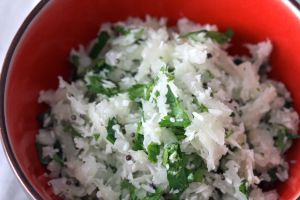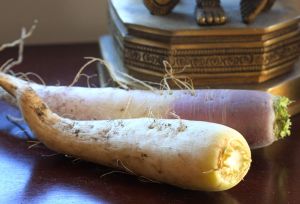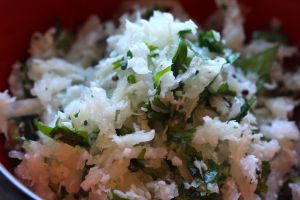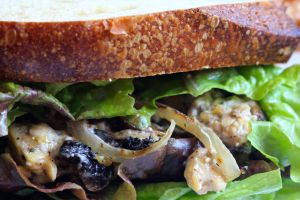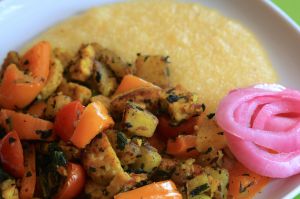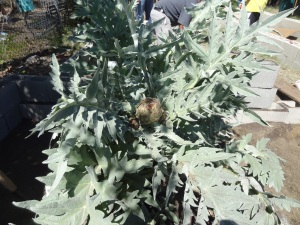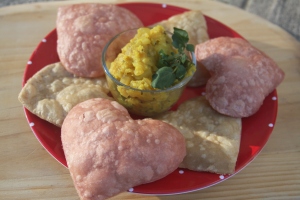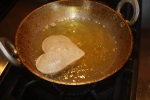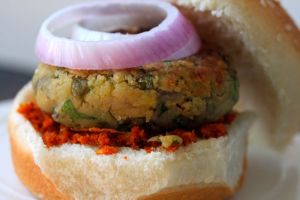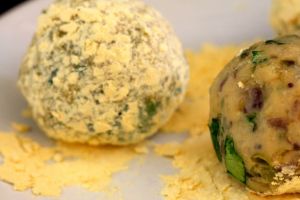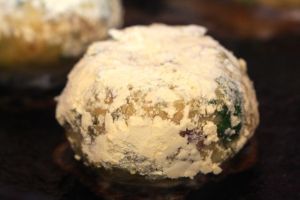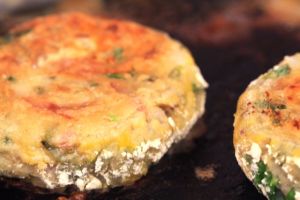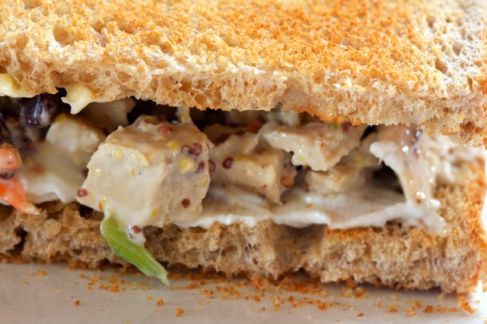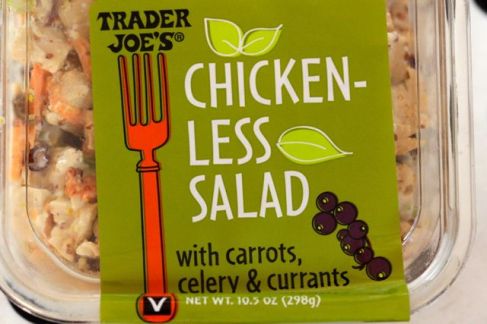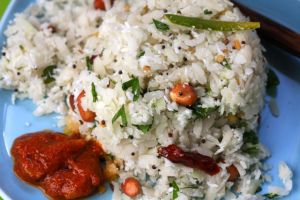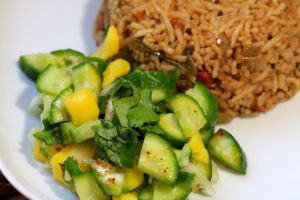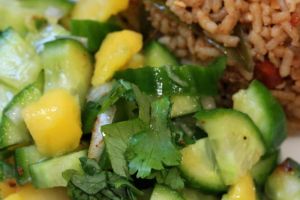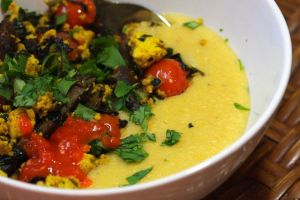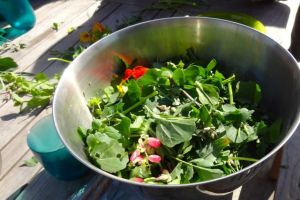
Another post for my Salad Project! This morning I had the opportunity to attend a Food Foraging class at the Huntington Botanical Gardens. For an avid gardener like myself, this was heaven on Sunday morning! We gathered early while there was still a chill in the air. Our teacher, Nancy Klehm, greeted us and gave us an intro on foraging. I enjoyed hearing her talk about how to treat the plants that are foraged. She doesn’t just go and rip out the plants, rather she gently takes a bit and leaves the rest for others. Just as we would never stomp through the wilderness while hiking, destroying things, we don’t want to destroy the plants that are feeding us. I agree with this outlook and respect for nature and for the plants.
We got started with a tasting of a bit of tea made with foraged dandelion root and burdock root as well as a tincture made with wild burdock root. She also brought some dried wild plums that we tasted. They reminded me of hibiscus tea. We then started our foraging as Nancy showed us several “weeds” and wild foods that are edible and/or medicinal. We learned about which foods can help the liver, kidneys and blood, how to use the plants for first aid and how to choose the best-tasting parts of the plants. The most useful take-away for me is finding out that all of these so-called weeds that we have in S. California are actually edibles. And they are high in nutritive values as well! We have a bed of radishes and carrots at our school garden that is overrun with oxalis, mallow and sow thistle (sonchus) that I will now leave in peace. The “weeds” can live in harmony with the radishes and carrots (as long as it isn’t too crowded). What a great salad it will make for our students.
At the end of our class, we feasted on some wonderful things. Each student gathered some wild greens for a community salad. Nancy brought a fruity tahini-based dressing (my favorite dressing base) that she mixed with some homemade several-fruits-vinegar, garlic and some other things. She also shared some homemade crackers with lavender seeds, fresh cheese made from raw cow’s milk, and wild current preserves. To top it off, she made a frittata with foraged oyster mushrooms, wild spinach and some other foraged greens. To wash it down, we had a tea made with wild sumac that was very tangy for lack of a better description (don’t try to make this at home as there are not-so edible types of sumac!). Thanks for a great class, Nancy!
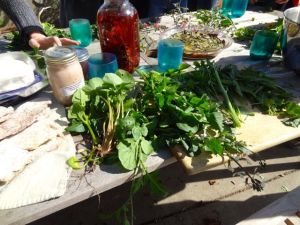
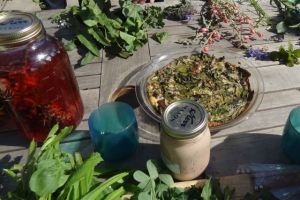
If you are going foraging, please be mindful of not eating things from sprayed areas or polluted areas. Better yet, take a class with Nancy! Here is a link to her website. Here are photos of just a few of the plants we learned about today:
Miner’s Lettuce / Claytonia perfoliata
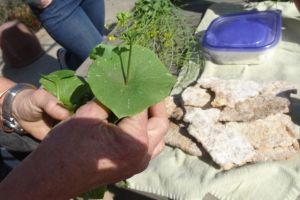
Oxalis (Wood Sorrel)
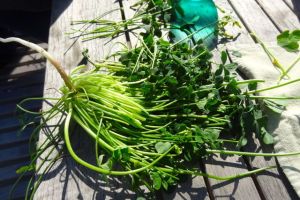
Chickweed / Stellaria media
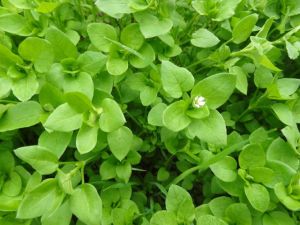
Mallow / Malva neglecta
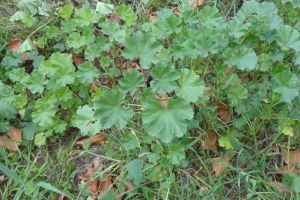
Curly Dock / Rumex crispus
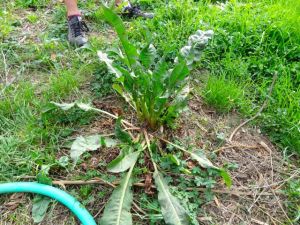
Wild Salad with Foraged Foods
In a large bowl, place:
handful each of 3 or more of any of the following: wild spinach, oxalis, sow thistle, dandelion, clover, wild mustard, mallow, yarrow, mugwort, curly dock, chickweed, plaintain leaf
add a handful or two of mint, lemon balm, Calendula leaves and / flowers, arugula, nasturtium leaves and/or flowers
Try to balance the bitter greens with the milder greens, the drier leaves with wetter leaves and add various flowers for texture and color. Mix and toss with dressing of your choice or the dressing below. Bitter greens are usually good with some type of fruit-flavored dressing.
Standard Tahini-Orange Dressing
1/4 cup of tahini
1/2 cup of orange juice
1/4 cup of water plus more as needed
1 – 2 cloves of garlic, minced
salt and pepper to taste
Mix the tahini and orange juice, stirring and adding water until it is the consistency you like. Add the minced garlic and stir well. Add salt and pepper to taste. Allow to sit for at least 10 minutes if possible to allow the garlic to infuse the dressing.
